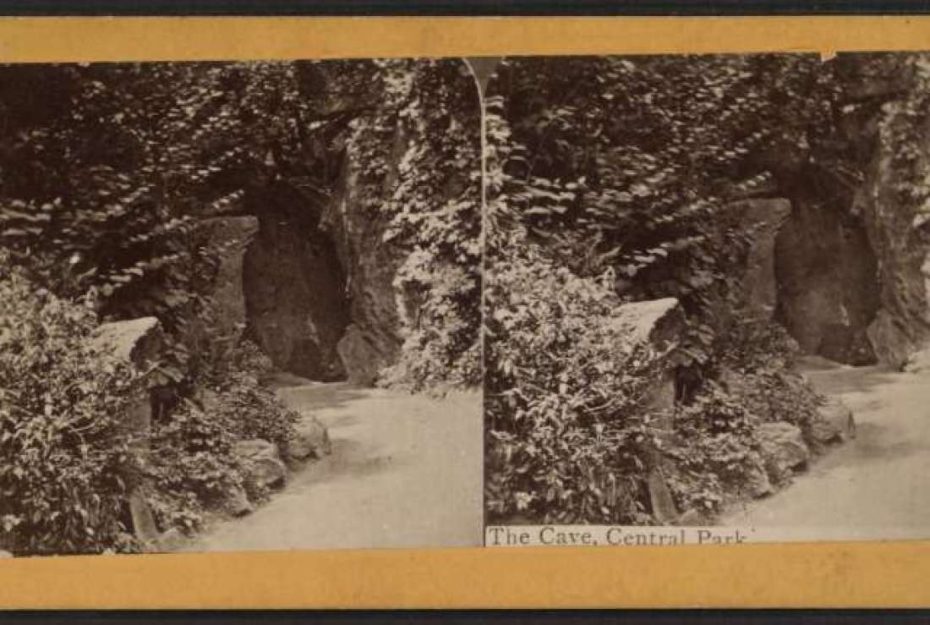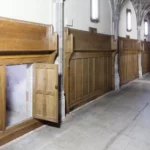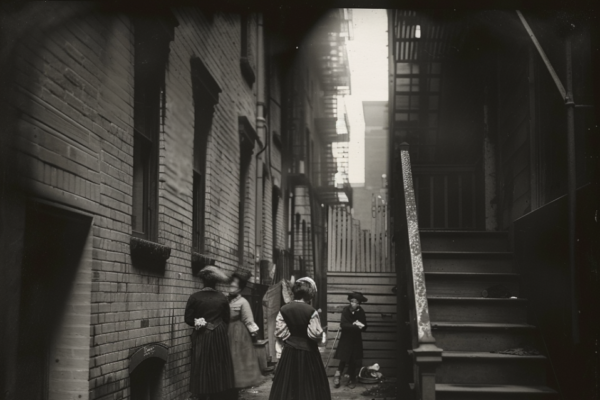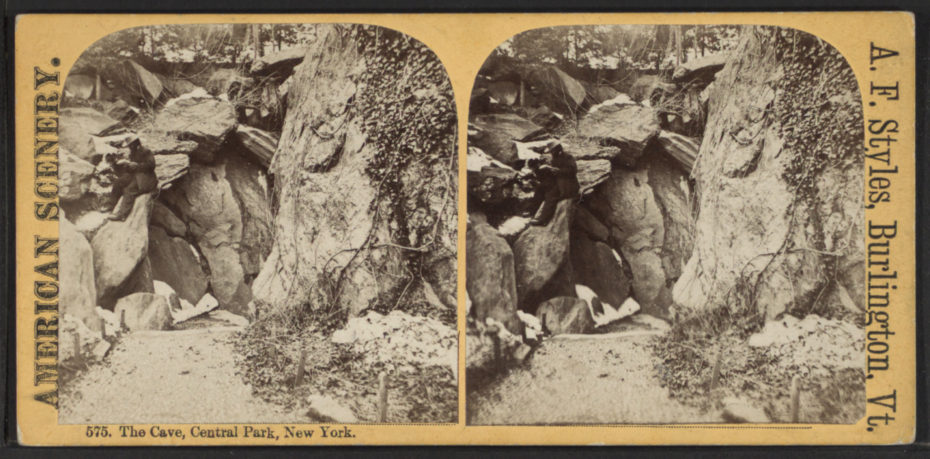
You won’t find it on any official maps, or find sign posts to show you the way. Tens of millions of visitors come to enjoy Central Park every year, but very few know that hidden away in the middle of the park is a mysterious cave. It’s so ancient it predates Central Park itself! The cave has been the site of murder, suicide, assaults, and secret trysts. In the late 19th century it was even the home of a runway school girl for a while. We’ll be hopping over some fences, treading through the undergrowth, and heading out to investigate the mystery of Central Park’s Old Native American Cave!
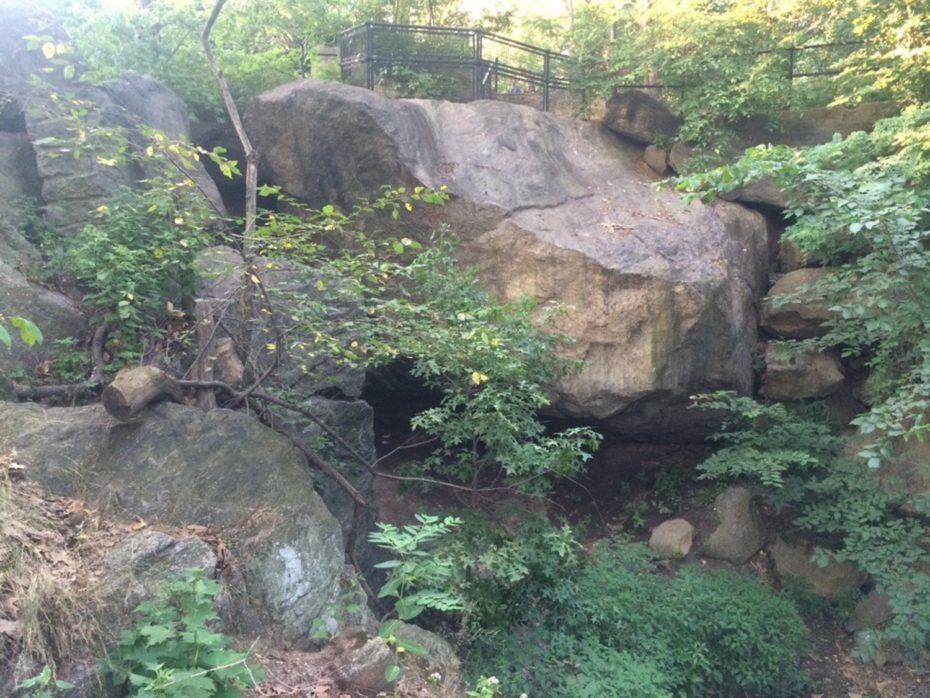
©Book Worm History
Whether any Native Americans actually used the old cave hidden away in the Ramble is debatable. But what is certain, is that when Frederick Law Olmstead and Calvert Vaux won the bid to build a vast park in the middle of the metropolis, the cave was already there, waiting to be discovered.
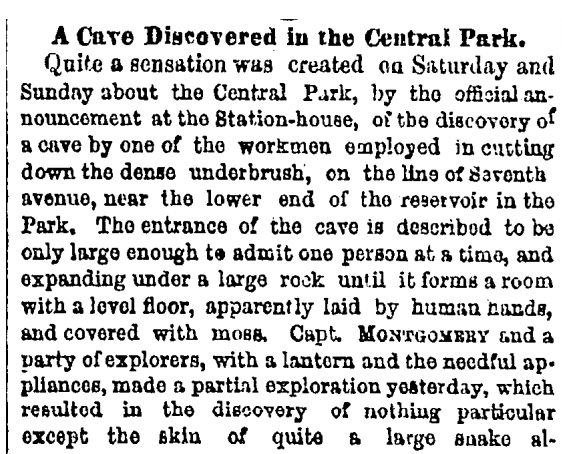
©New York Times
Central Park opened in the winter of 1858 as an 840 acre oasis in the middle of New York. It was the first public landscaped park in the United States, a ‘greensward’ as Olmstead and Vaux called it.
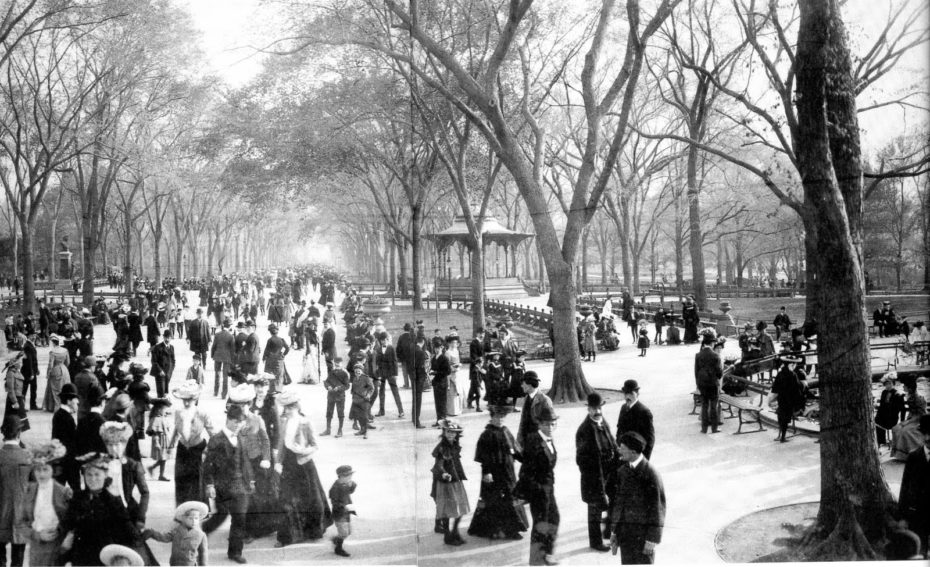
The 1899 Baedeker Guide described how the ‘great promenade and open-air resort’ was originally, ‘a tract of swamp and rock….its transformation into so beautiful a park is an important monument of American skill and perseverance.’
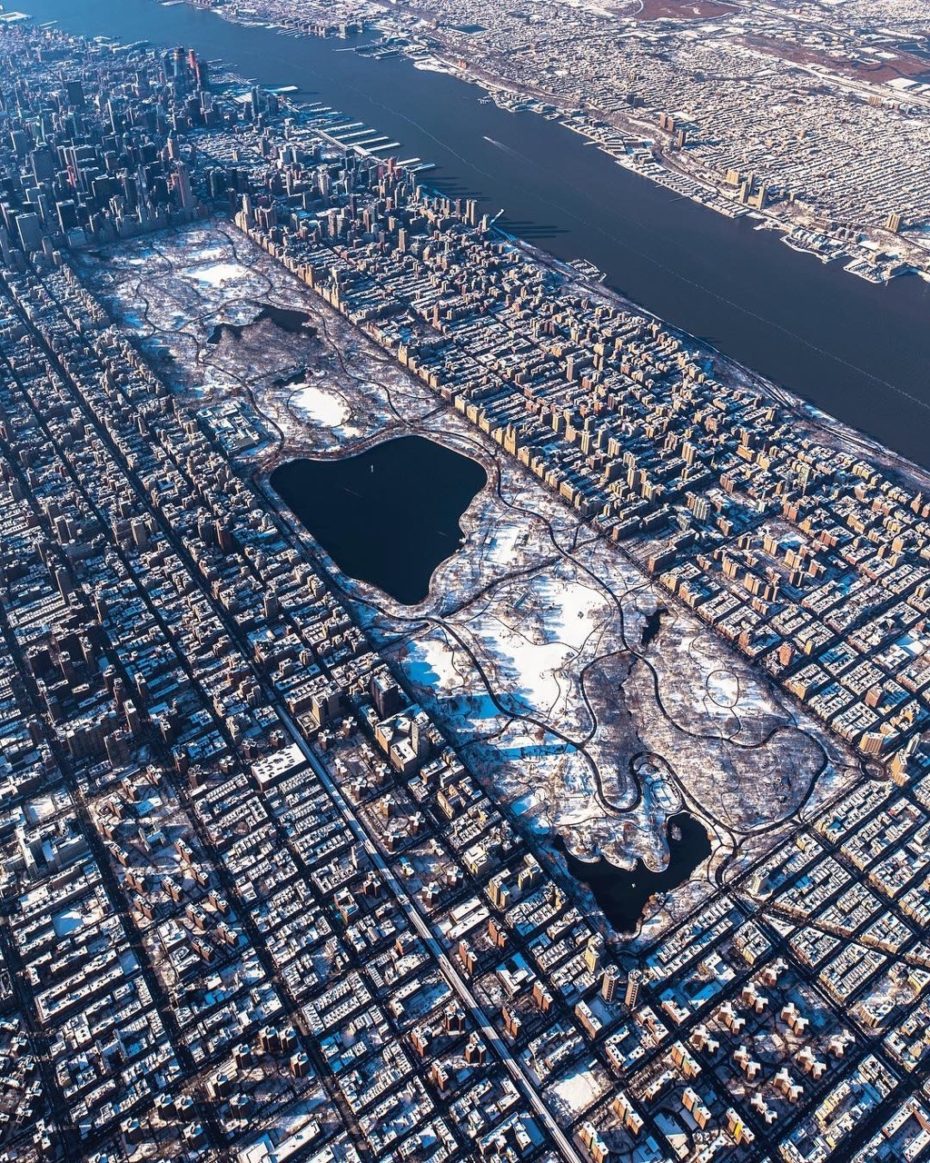
New York Central Park © Craigsbeds
Whilst much of Central Park was sculpted into picturesque lawns, tree-lined avenues and lakes, Olmstead and Vaux deliberately created some wilder, more overgrown places; chiefly that maze of hills, winding steps, and lush, thick undergrowth they called the Ramble; “a wild garden away from the carriage drives and bridal paths.”
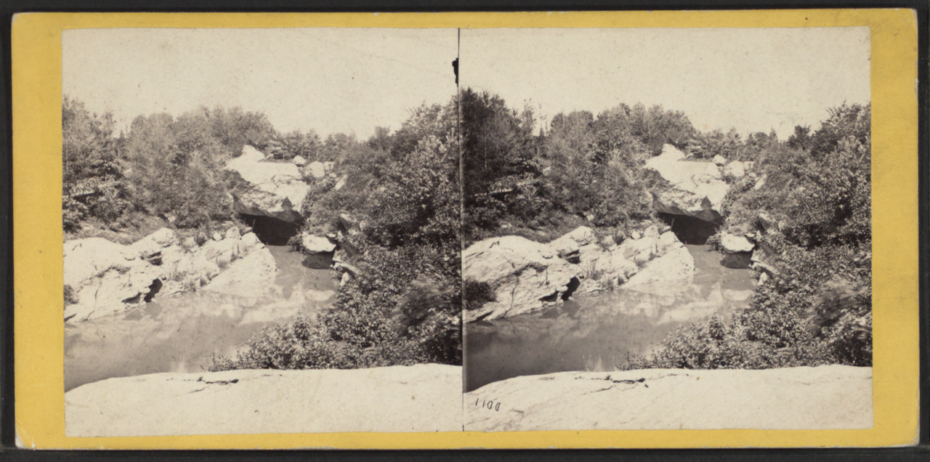
“The Ramble”, wrote James Miller in his 1866 Illustrated Guide to Central Park, “is a grateful shade of…dense vegetation, with its quiet walks and its pleasant resting-places.” Over a 150 years later, not much has changed, and wandering through the lush, wild Ramble, it is easy to forget that you are surrounded by one of the world’s busiest cities. “It is deservedly the most favourite haunt of the park visitors”, continues Miller. “Particularly of those who go to lounge away the summer hours in dream or reverie, or to pore over the pages of a favourite novelist or poet, or to whisper words of love in accompaniment to the sighings of soft airs.”
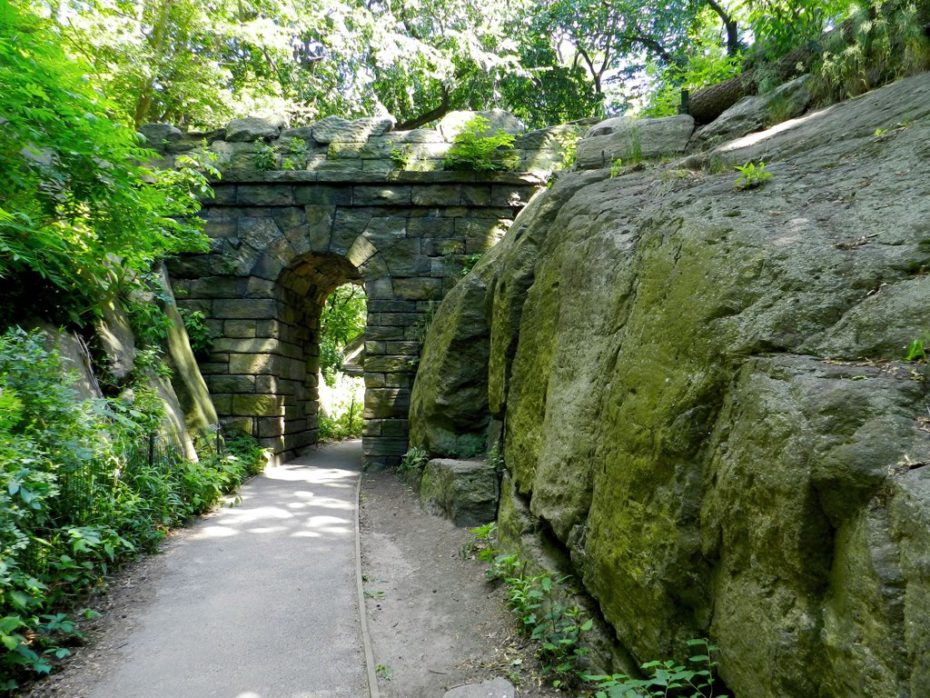
And lurking in the midst of this idyllic reverie is the hidden cave – to find it requires keen eyes. It can be found not far from the northern end of The Lake, near where the Ramble Arch meets Oak Bridge. At a high point overlooking The Lake, if you look down and to your left you will see, mostly hidden by plants, some rude, rocky steps…
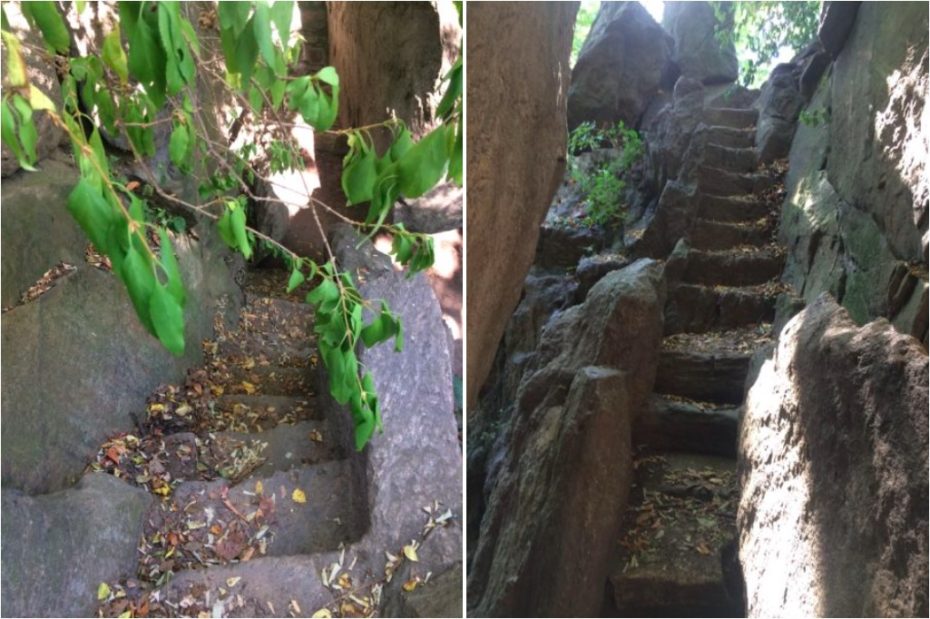
A quick hop over the fence, and the stairway will lead down to our destination. “The Cave, or the Grotto as it might perhaps more properly be called,” continues Miller, “is one of the most surprising of surprises which go to make up the mystery and delight of the Ramble. To the juvenile visitor especially, the Cave is an Eldorado of pleasures.”
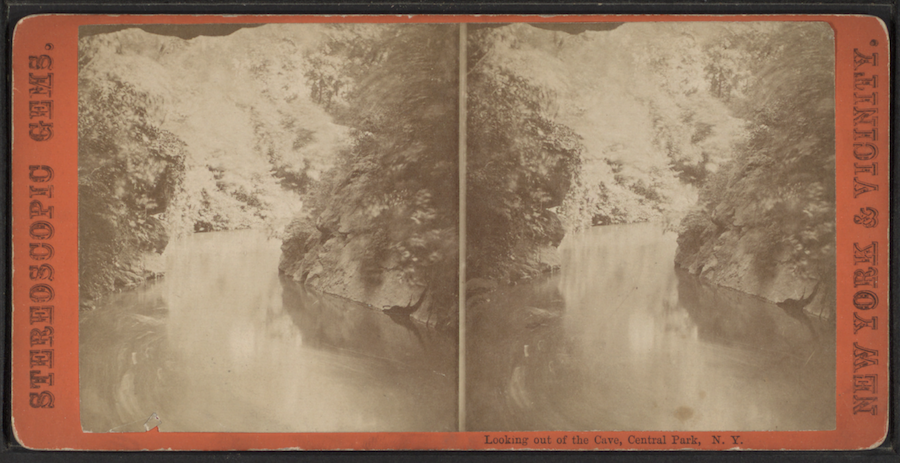
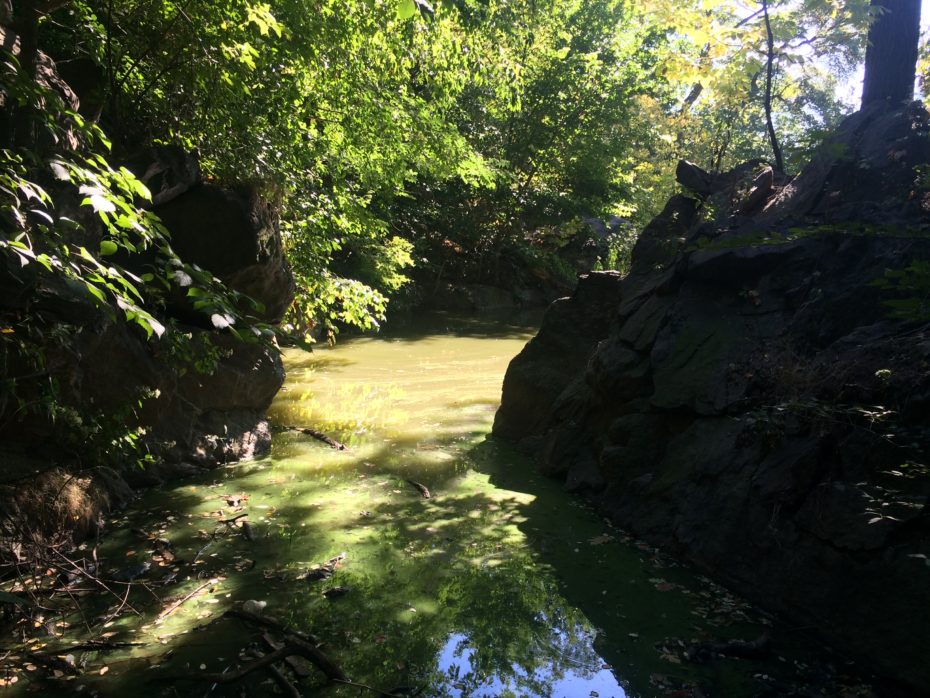
©Luke J Spencer
At the foot of the stone stairway is a sheltered inlet leading out to The Lake, where intrepid boaters can row right up to the cave’s mouth.
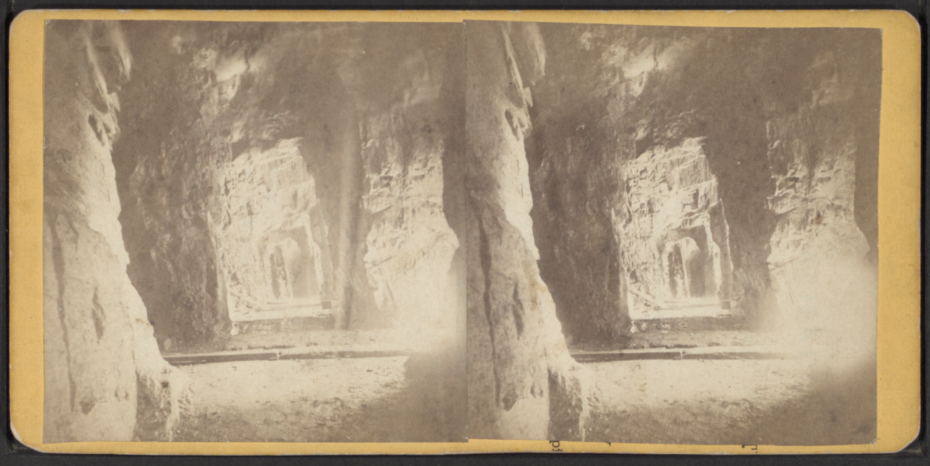
Sadly, much of the cave was sealed up in 1934, leaving only the entrance. For this secret hideaway was not just an ‘Eldorado of pleasures’ but the sight of many nefarious crimes. Assaults and deaths were common here in the obscure cave.
In 1904, The New York Times wrote of the police finding, “a young man on the stone steps, dead from a pistol wound, his clothes on fire from the self-inflicted shot. In a black suit, a derby and a tie, he made a perfectly respectable corpse. He carried no identification, but there was a note: ‘My name is Boy. No relatives in this country.”
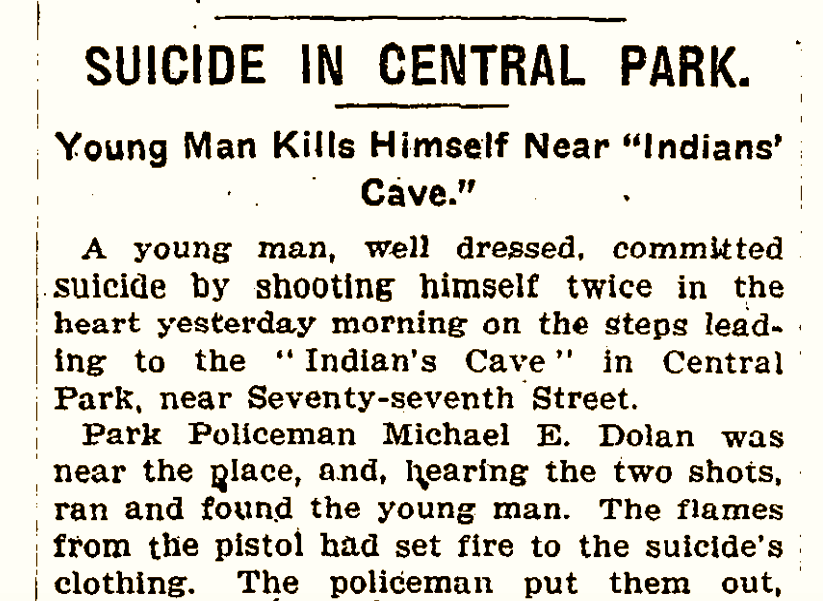
©New York Times
Esther Crain over at the always fascinating Ephemeral New York, has done sterling work uncovering some of the more unscrupulous goings on at the cave, such as the sad story of Grove L. Kline, an unhinged shipped clerk. A long vanished newspaper, the New York Sun ran a story in February, 1908, of a policeman rushing to a cry for help coming from the cave; “he found the man with a gash in his throat, and an open razor in his hand. ‘One of the sparrows told me to do it. I didn’t want to, but I had to obey’, the man said.”
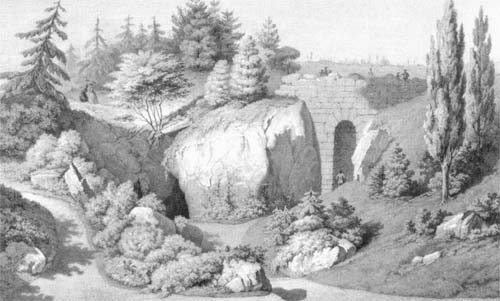
Sparrows not withstanding, the Times ran an even more peculiar story in 1897, under the head line ‘Lived A Month In A Cave’. It told the sad tale of one Susie Grunelt, a 15 year old girl from Bohemia, who ran away from her parent’s house at 312, East 71st.
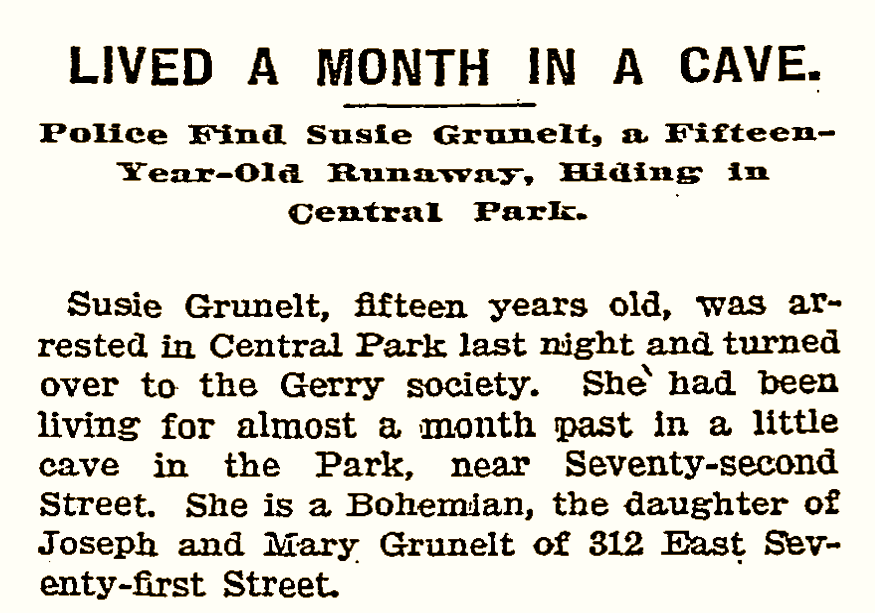
©New York Times
Exactly what happened wasn’t reported, only that Grunelt was arrested and had been living, “in a little cave in the Park, near Seventy-Second Street” for a month.
The secluded character of the Cave proved to be its un-doing. In 1929 alone, 335 men were arrested for “annoying women in the Park”, the Times noting that the Native American cave was particularly favoured. Five years later, the Parks Department sealed up the Cave for good.
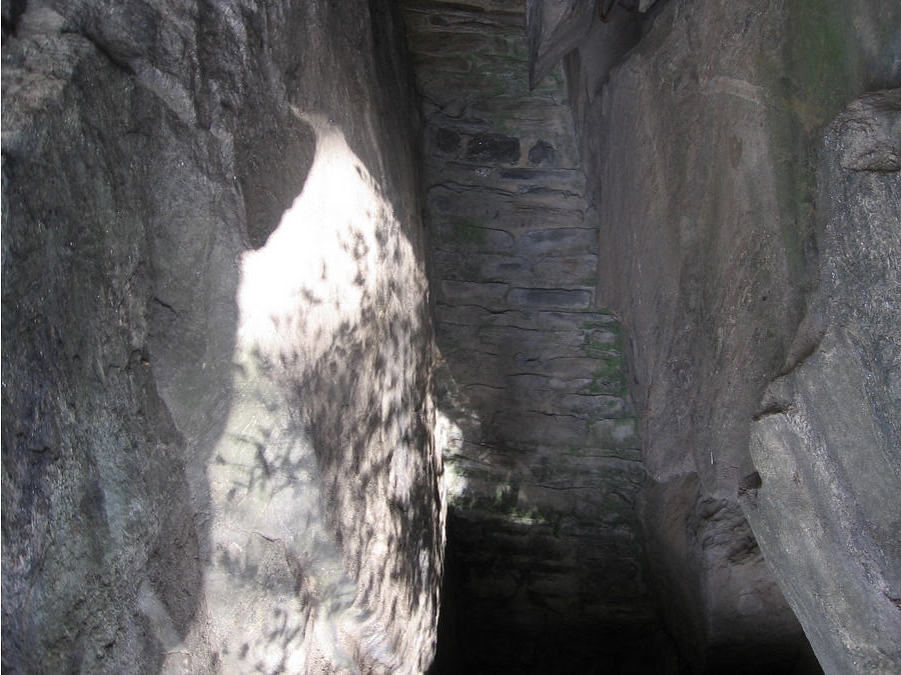
© Central Park Story
Today however, once you’ve found the steps, and are in the hidden inlet, sitting in the mouth of the Cave, it is one of the quietest, most secluded spots in the city, largely because no-one knows it is there!
